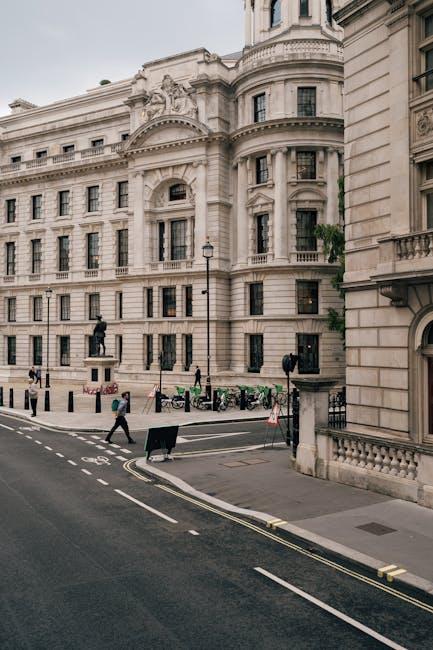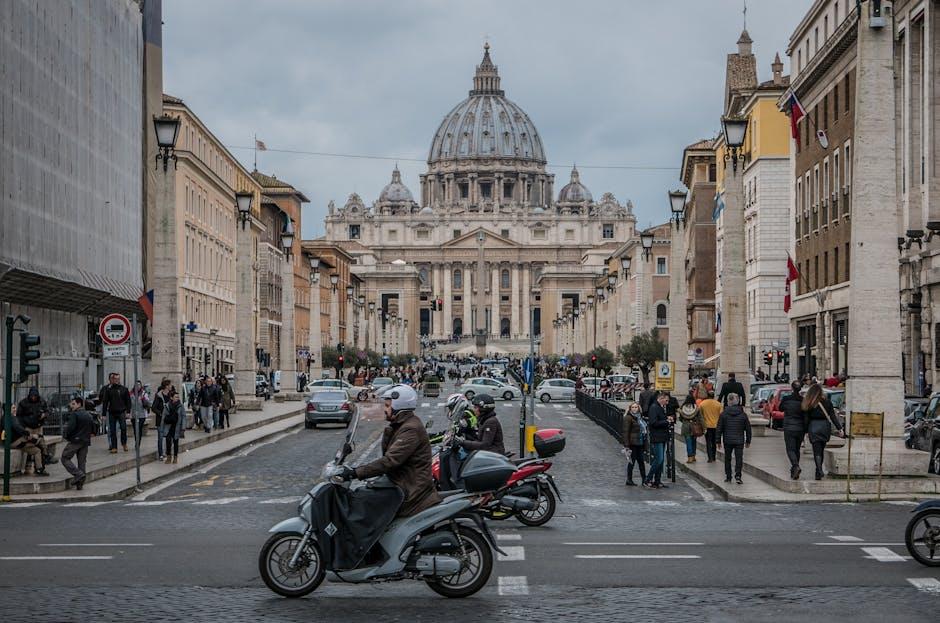In the quiet embrace of ancient ruins, where whispers of the past dance with the present, a delicate balancing act unfolds. Each year, millions of travelers are drawn to the allure of cultural heritage sites, eager to tread the paths of history and immerse themselves in the rich tapestry of human civilization. Yet, as the world becomes more interconnected and tourism flourishes, these cherished sites face an unprecedented challenge. The very influx that sustains them threatens to erode their essence, leaving custodians grappling with the pressing need to preserve authenticity while accommodating curiosity. “” delves into this intricate dance, exploring the fine line between celebrating our shared legacy and safeguarding it for generations yet to come.
Preserving the Past: Challenges in Heritage Tourism
As the allure of historic sites draws millions of visitors worldwide, the intricate dance of maintaining these treasures becomes ever more complex. Heritage tourism, while a boon for local economies, often comes with a heavy price. The very footfalls that sustain these sites can also threaten their longevity. Preserving the authenticity of ancient architecture, delicate artifacts, and intangible cultural practices demands a careful balance between accessibility and conservation. This balancing act is not just a logistical challenge but a philosophical one, requiring stakeholders to weigh the immediate benefits of tourism against the long-term impacts on cultural legacy.
- Wear and Tear: High traffic can accelerate deterioration of historic sites.
- Cultural Erosion: Over-commercialization can dilute the authenticity of cultural practices.
- Resource Allocation: Financial gains from tourism must be reinvested into preservation efforts.
- Community Impact: Local communities may face disruptions in daily life, necessitating a collaborative approach to tourism management.
Innovative solutions are needed, such as digital recreations and visitor caps, to ensure these cultural gems can be appreciated for generations to come. Sustainable tourism practices not only protect heritage but also enhance the visitor experience by preserving the stories and significance embedded in each site.

The Impact of Foot Traffic on Historical Sites
Foot traffic through historical sites can be a double-edged sword. On one hand, it brings essential revenue and global awareness, but on the other, it threatens the very essence of the sites themselves. The delicate frescoes of the Sistine Chapel, the intricate carvings of Angkor Wat, and the ancient stones of Stonehenge all face the wear and tear of countless visitors each year. This increasing number of tourists often leads to erosion of stonework, damage to fragile artifacts, and even structural instability. The challenge lies in preserving these treasures while accommodating the modern wanderer’s desire to connect with history.
- Environmental Degradation: Trampling vegetation and disturbing wildlife habitats.
- Infrastructure Strain: Overburdened facilities struggling to maintain visitor services.
- Authenticity Erosion: Commodification of cultural experiences for tourism appeal.
Balancing these concerns requires innovative solutions such as implementing visitor caps, promoting off-peak visits, and utilizing virtual reality experiences to provide alternative ways to engage with history. Moreover, educating tourists on respectful behavior and fostering a sense of stewardship can help protect these sites for future generations. The key is to create a sustainable model that respects both the cultural significance of these sites and the economic benefits they bring.

Strategies for Sustainable Cultural Tourism
Preserving cultural heritage while welcoming tourists requires a delicate balance that can be achieved through thoughtful strategies. Community involvement plays a crucial role in sustainable cultural tourism. By engaging local communities in decision-making processes, tourism can be developed in a way that respects and reflects the cultural identity of the area. This ensures that tourism benefits the community economically and socially, fostering a sense of ownership and pride among residents.
Implementing responsible visitor management is another key strategy. This includes initiatives like limiting visitor numbers to prevent overcrowding and wear on cultural sites, promoting off-peak travel to spread tourist impact throughout the year, and educating visitors on local customs and the significance of cultural landmarks. Additionally, creating sustainable partnerships between local businesses and cultural organizations can help develop tourism products that are both authentic and environmentally friendly, ensuring that cultural tourism continues to thrive without compromising the integrity of the heritage it seeks to celebrate.
Engaging Communities in Heritage Conservation
In the delicate dance of preserving cultural heritage while promoting tourism, engaging local communities plays a pivotal role. Their intimate knowledge and intrinsic connection to their cultural landscapes make them invaluable stewards of heritage conservation. Communities offer a unique perspective, ensuring that conservation efforts are not only authentic but also sustainable. By involving them in decision-making processes, they become active participants rather than passive observers, fostering a sense of ownership and pride in their cultural legacy.
To effectively engage communities, several strategies can be implemented:
- Educational Workshops: Equip locals with the skills and knowledge needed to manage and protect heritage sites.
- Cultural Festivals: Celebrate and promote local traditions, drawing both community and tourist interest.
- Partnerships with Local Artisans: Support traditional crafts and businesses, integrating them into the tourism experience.
- Feedback Mechanisms: Establish channels for locals to voice concerns and suggestions regarding tourism impacts.
By prioritizing these collaborative efforts, communities can ensure that tourism becomes a vehicle for cultural preservation rather than an agent of erosion.




